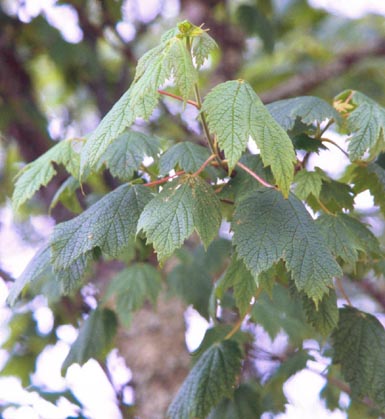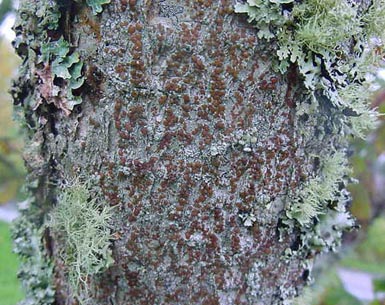Form: This is a small tree reaching an average maximum height of 25 ft.
Leaves:
Arrangement: opposite; simple
Shape: 3-5 lobed; shallow v-shaped sinuses
Margin: lobes serrate; rugose
Texture: glabrous on top; veins protrude out on the bottom of leaves
Venation: pinnate

Bark: It has thin greenish to red-brown bark.

Twigs and buds: Mountain maple has pubescent slender red twigs.
Flowers and fruit: It develops yellowish-green flowers and the fruit is a paired samara.
Distinguishing characteristics: The petiole is red and pubescent and the veins on the underside of leaf are dented out of the leaf. It has a distinctly different leaf shape and bark appearance than striped maple, which it could potentially be confused with.
Range: It is most common in southeastern Canada. Populations also exist in the northern Lake States and the southern Appalachians above 6000 ft.
Silvics: It is tolerant of shade and prefers cool climates with abundant moisture.
Ecological and cultural importance: It has no commercial value, but is browsed by deer, moose, and caribou.